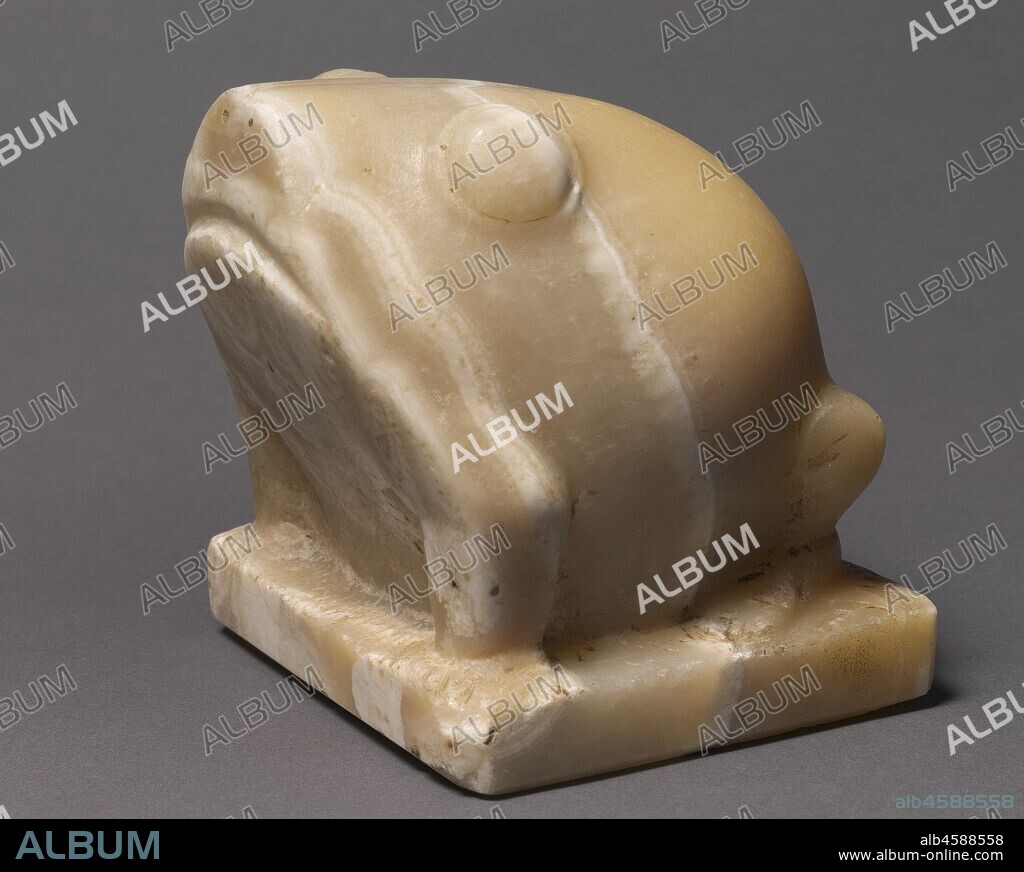alb4588558
Statue of Heqat, the Frog Goddess, c. 2950 BC. Creator: Unknown.

|
Añadir a otro lightbox |
|
Añadir a otro lightbox |



¿Ya tienes cuenta? Iniciar sesión
¿No tienes cuenta? Regístrate
Compra esta imagen.
Selecciona el uso:

Título:
Statue of Heqat, the Frog Goddess, c. 2950 BC. Creator: Unknown.
Descripción:
Ver traducción automática
Statue of Heqat, the Frog Goddess, c. 2950 BC. During the Predynastic period statues of animals are much more common than those of humans. This statue of a frog stands at the beginning of a great tradition of animal sculpture in Egyptian art. The sculptor has shown great sensitivity to the natural banding of the stone, using it to enhance the roundness of the animal's form. Small frogs, mostly of faience, are among the most common votive offerings deposited at early temple sites. The frog's exact religious significance in the Predynastic period is unknown, but in later times it was most often identified with Heqat, the goddess who assisted at childbirth.
Crédito:
Album / Heritage Art/Heritage Images
Autorizaciones:
Tamaño imagen:
3890 x 3112 px | 34.6 MB
Tamaño impresión:
32.9 x 26.3 cm | 13.0 x 10.4 in (300 dpi)
Palabras clave:
 Pinterest
Pinterest Twitter
Twitter Facebook
Facebook Copiar enlace
Copiar enlace Email
Email
